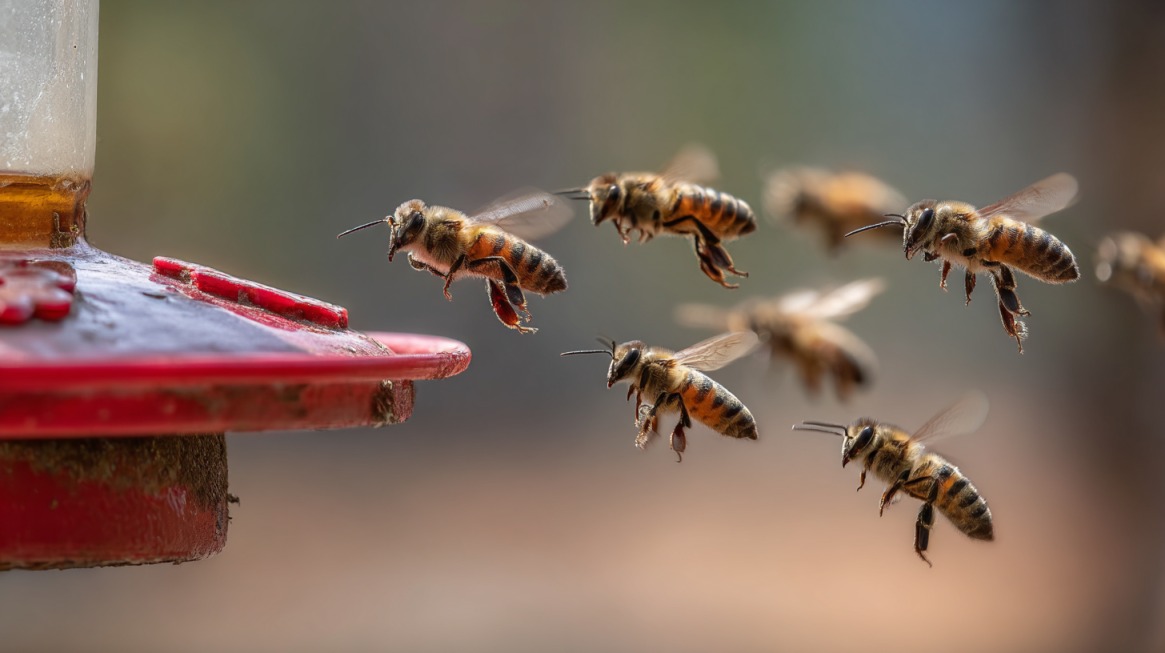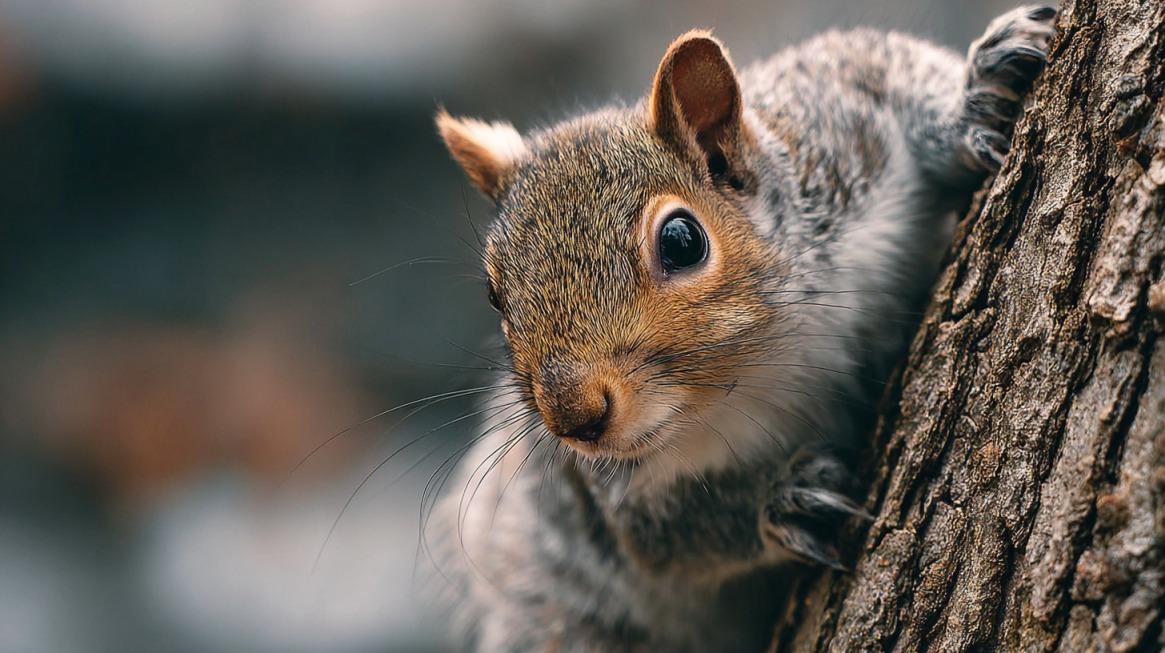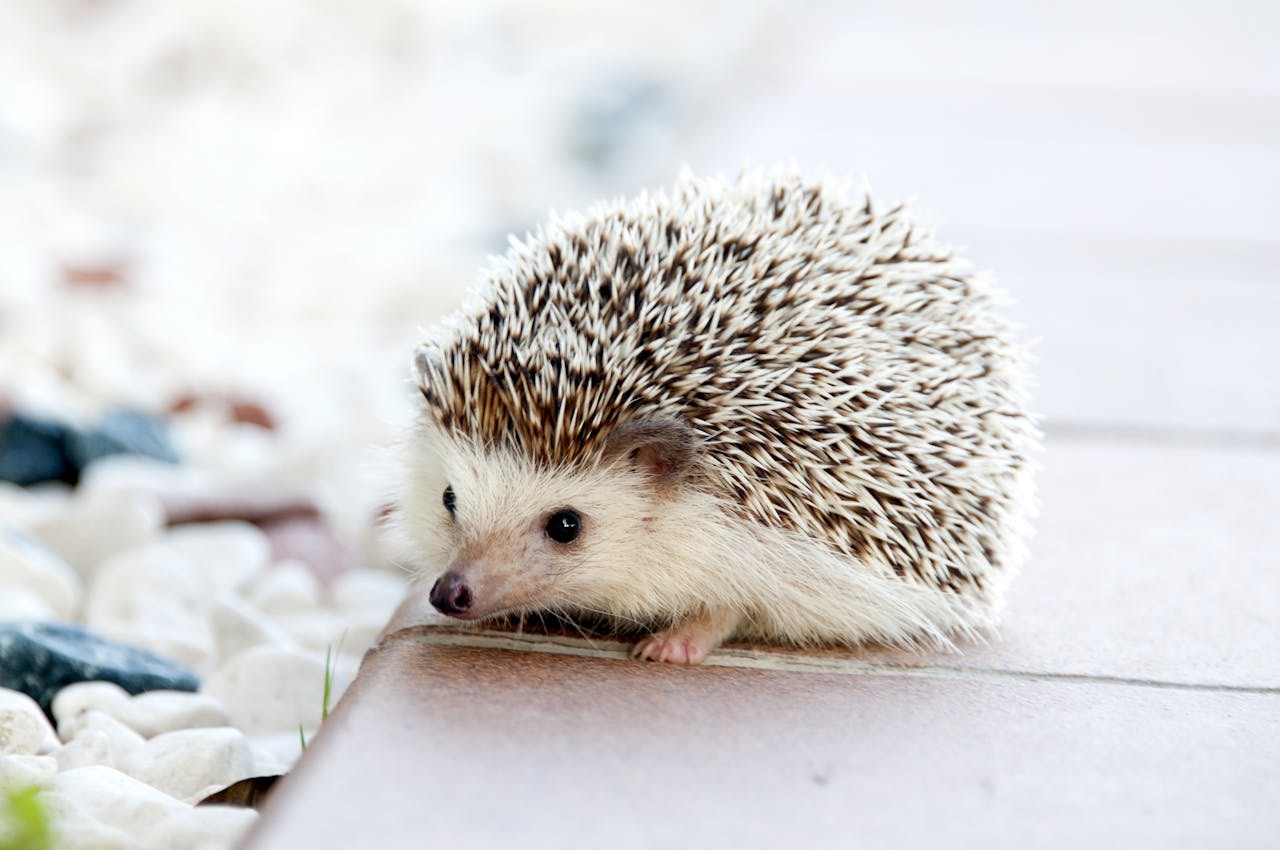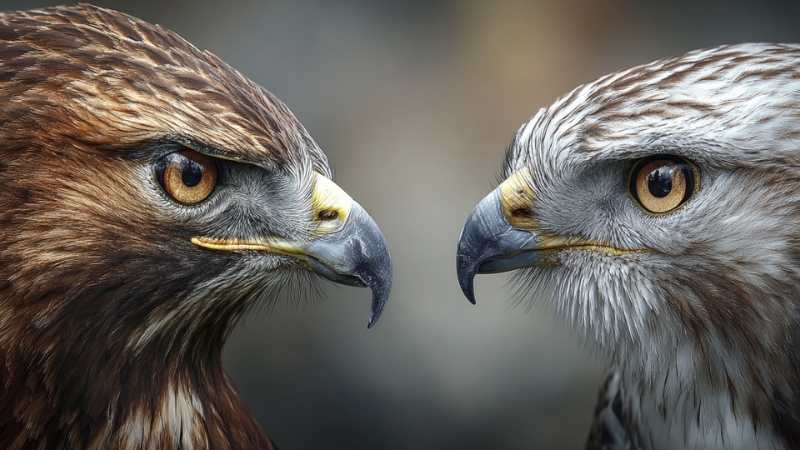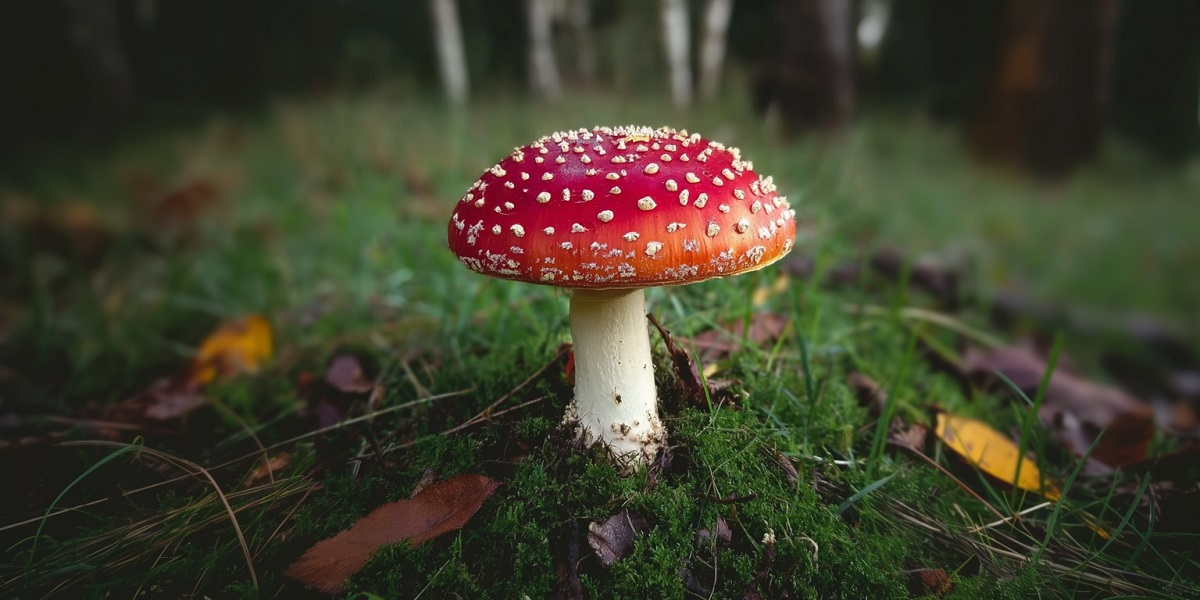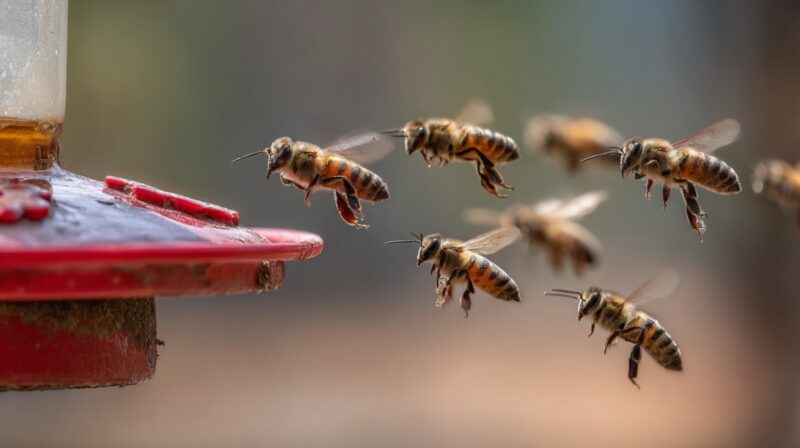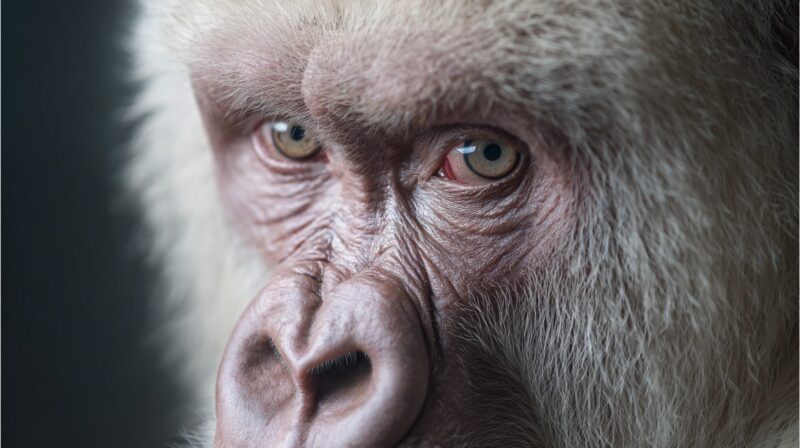
Share Post:
Albinism in animals is a rare genetic condition that results in a complete lack of melanin, the pigment responsible for color in:
- Skin
- Fur
- Feathers
- Eyes
Without melanin, affected animals appear entirely white or pale and often have red or pink eyes. Albinism occurs across many species, yet it remains extremely rare due to its genetic basis and the challenges it causes in survival.
In the wild, albino animals face numerous obstacles such as sun sensitivity, vision problems, and increased visibility to predators.
Despite these challenges, their ghostly beauty continues to fascinate wildlife enthusiasts. Each of these remarkable creatures symbolizes both fragility and resilience in nature.
1. Albino Alligator
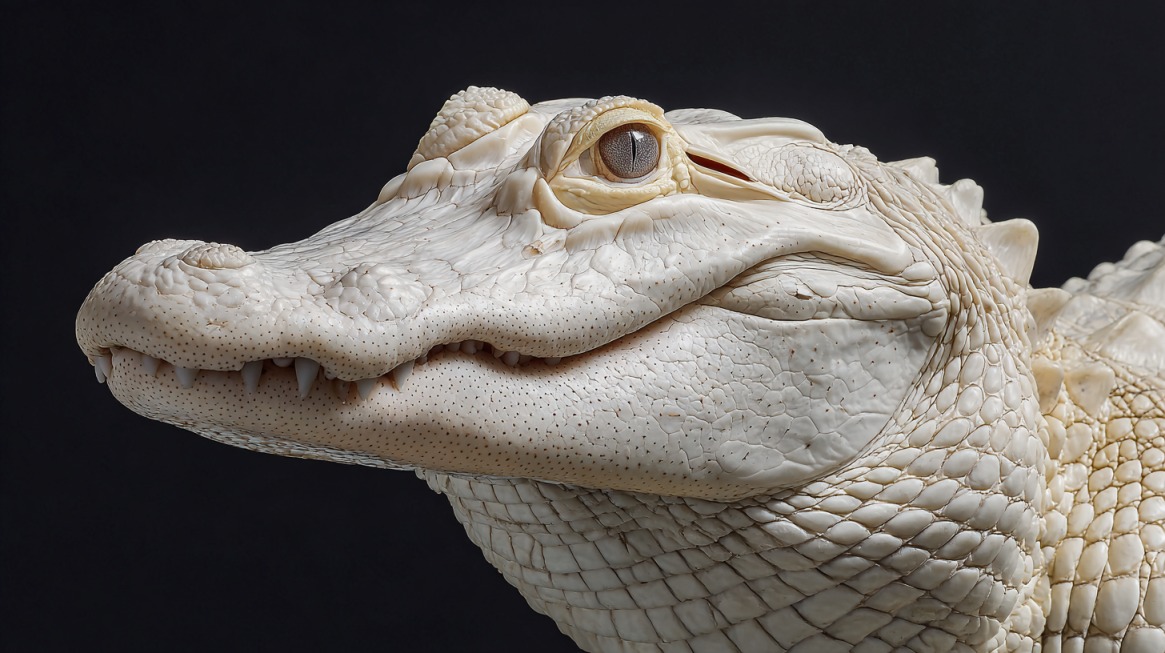
Albino alligators are among the most captivating albino animals on Earth. Their snow-white scales, pinkish eyes, and ghostly presence make them unforgettable to those lucky enough to see one.
Examples like Claude at the California Academy of Sciences and Blizzard and Snowflake at Wild Florida have gained worldwide attention.
Visitors are drawn by their pale glow, though these animals live under careful conditions that protect them from sunlight and stress.
Life in the wild is far less forgiving. Albino alligators struggle daily with sunburns, limited vision, and lack of camouflage. Their white skin makes them highly visible to both predators and prey, reducing their chances of survival drastically.
Only about 100 to 200 albino alligators are believed to exist across the globe.
- Coloration: Milky-white scales with pinkish eyes.
- Habitat Challenges: High vulnerability to sunlight and predators.
- Estimated Population: Around 100–200 individuals worldwide.
- Known Individuals: Claude, Blizzard, and Snowflake.
2. Albino Humpback Whale (Migaloo)
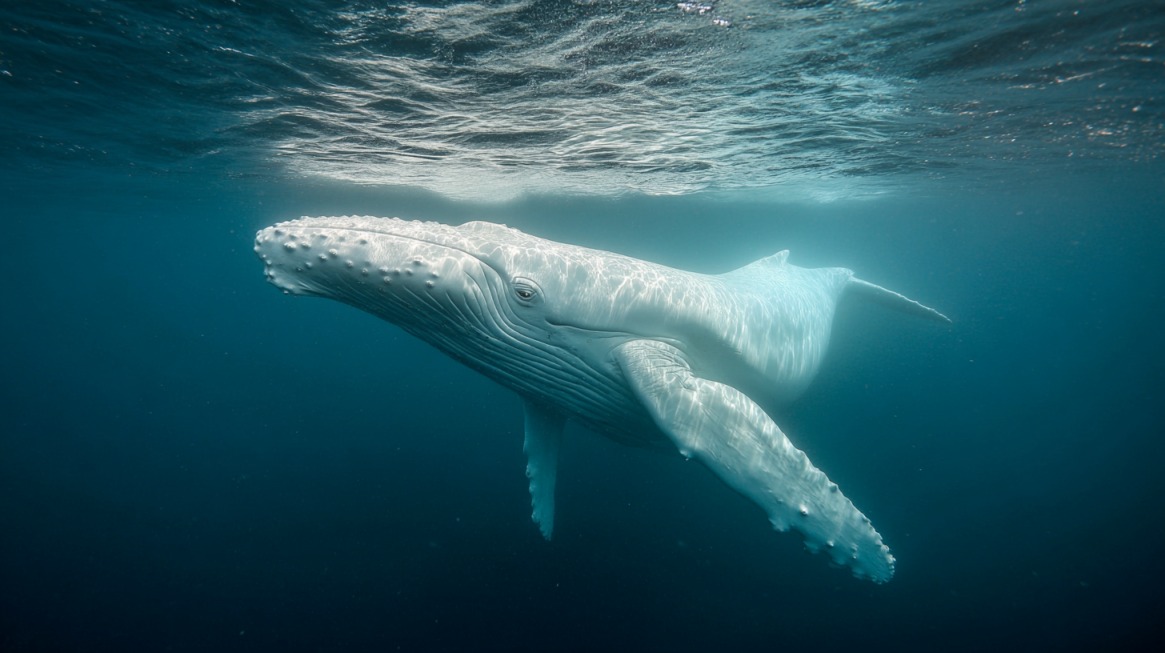
Migaloo, an albino humpback whale, remains one of the ocean’s most remarkable living legends. First sighted near Australia in 1991, his glistening white body set him apart immediately.
His name comes from the Aboriginal language, meaning “white fella,” paying homage to his extraordinary color and cultural resonance.
Scientists estimate that only one in 40,000 humpback whales is albino, placing Migaloo among the rarest of marine creatures.
His existence has helped drive awareness of marine conservation and whale protection efforts.
- Ship Collisions: Bright coloration makes him easily seen but also harder to avoid in crowded waters.
- Sun Exposure: Lack of melanin leaves him vulnerable to UV damage.
- Tourist Pressure: Sightings often attract boats that can stress or injure him.
3. Albino Gorilla (Snowflake)
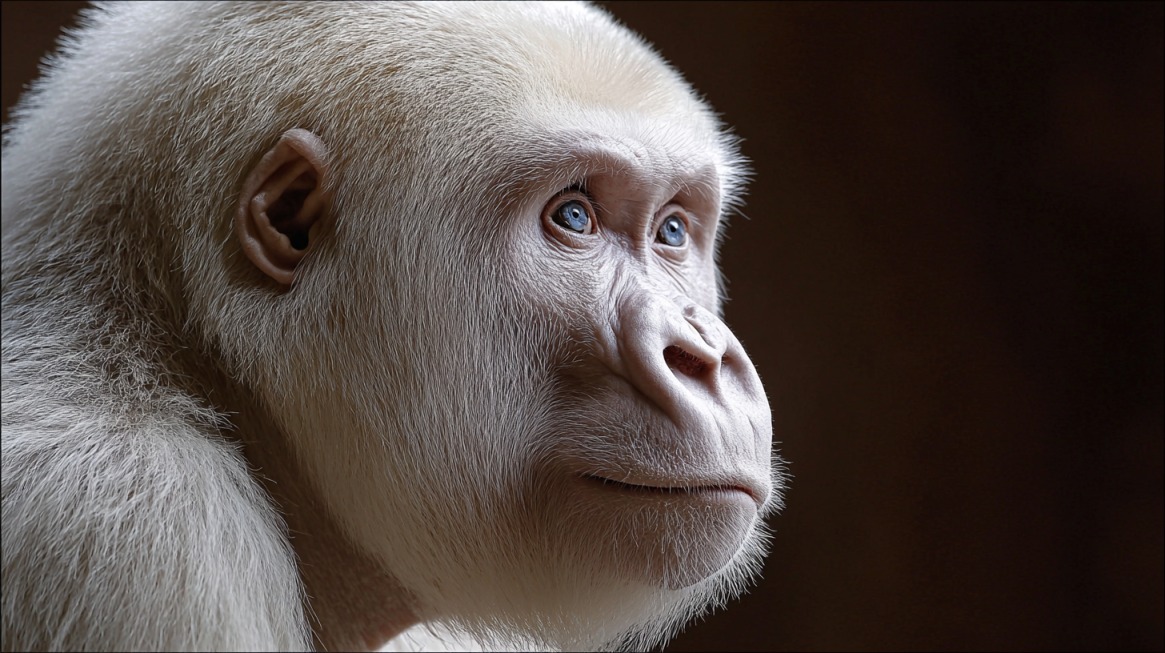
Snowflake remains an icon among albino animals. Born in Equatorial Guinea and later transferred to the Barcelona Zoo, he became the only recorded albino gorilla in human history.
His soft white fur, pink skin, and calm demeanor made him one of the zoo’s most beloved residents.
Snowflake’s condition brought both attention and challenges. He suffered from sun sensitivity and was eventually diagnosed with skin cancer, a condition likely linked to his albinism.
Genetic testing later revealed that his albinism resulted from inbreeding, an unfortunate but informative discovery that deepened scientific insight into gorilla genetics.
- Birthplace: Equatorial Guinea.
- Residence: Barcelona Zoo, Spain.
- Health Issues: Skin cancer caused by UV sensitivity.
- Genetic Discovery: Inbreeding identified as the cause of albinism.
4. Albino Squirrel
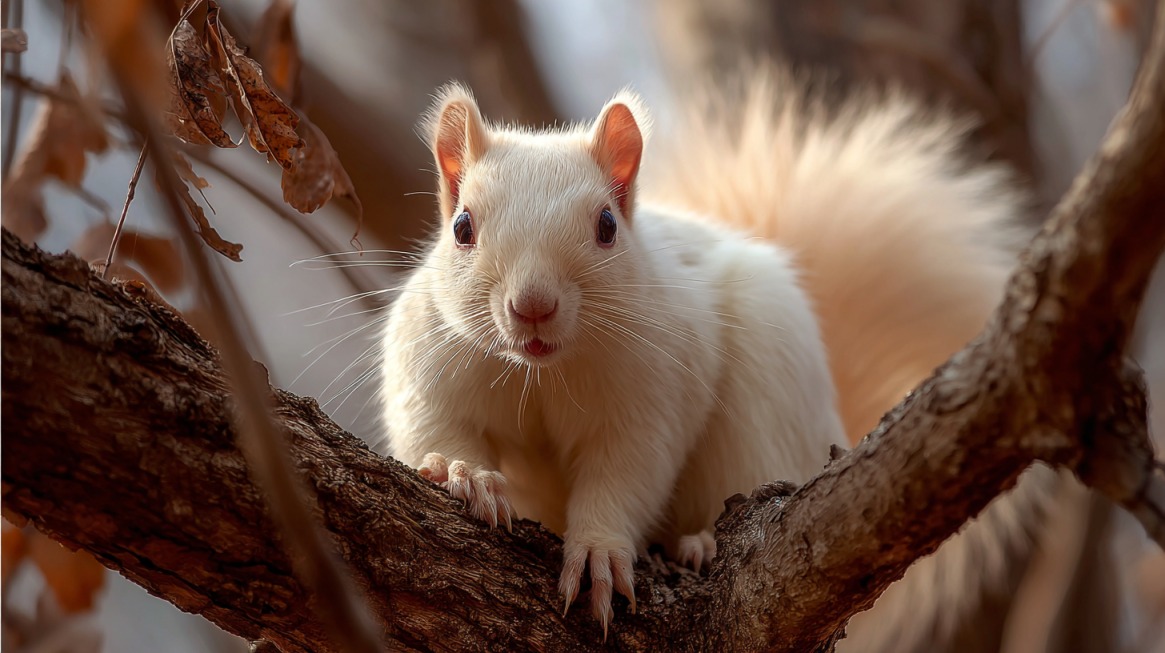
Albino squirrels are incredibly hard to spot in nature. Their snowy fur and bright red eyes distinguish them from leucistic squirrels, which retain normal eye pigmentation.
These squirrels stand out in urban and forest environments, often capturing the attention of passersby.
Unfortunately, their striking color makes them vulnerable to predators. Their visibility and poor camouflage reduce their lifespan significantly when compared to normal squirrels.
Wildlife experts estimate that only one in every 100,000 squirrels is born albino.
- Color Difference: True albinos have red eyes, unlike leucistic variants.
- Survival Odds: Low due to lack of camouflage.
- Frequency: Around 1 in 100,000 sightings.
- Human Help: Frequently rescued or relocated to safer areas.
5. Albino Rattlesnake
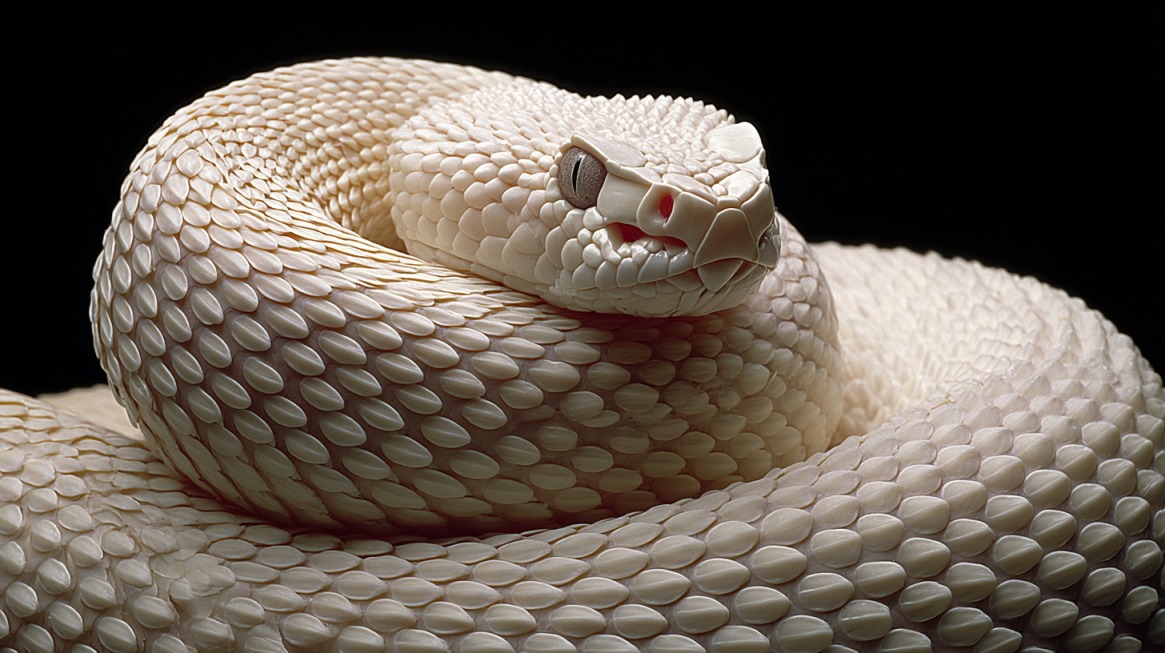
Albino rattlesnakes are among the most visually striking reptiles in the wild. Their typical dark patterns are replaced by cream, white, or light yellow tones, with glowing red eyes completing their ghostly look.
One of the best-known examples is the albino western diamondback rattlesnake.
While they may appear majestic, survival is challenging. Their light coloring offers no camouflage, leaving them exposed to predators.
Sunlight also poses a constant danger, as their unpigmented skin burns easily. Encounters with such reptiles are rare, even for experienced herpetologists.
- Coloration: Pale yellow or cream with red eyes.
- Habitat Risk: Exposure to sunlight and predators.
- Species Example: Western diamondback rattlesnake.
6. Albino Peacock
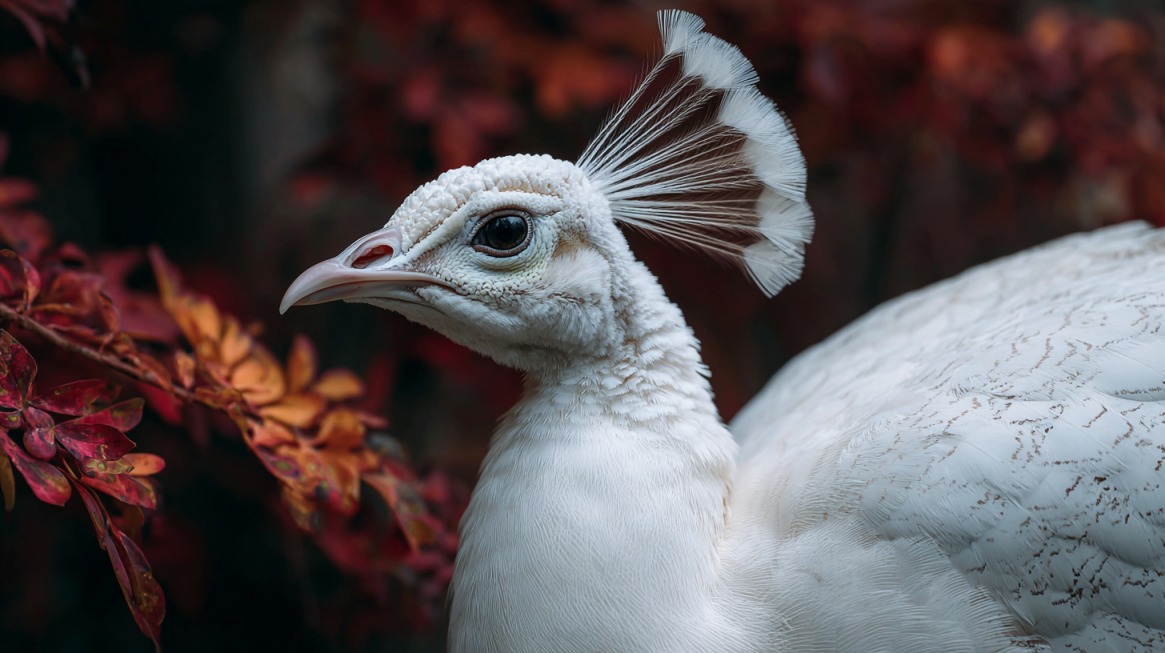
Albino peacocks represent elegance in its purest form among albino animals. Their white plumage sparkles under sunlight, creating a visual spectacle unmatched by any other bird.
True albino peacocks differ from leucistic ones by lacking all pigment, including in their eyes, which appear reddish-pink.
An estimated one in 30,000 peacocks is born truly albino. Their shimmering feathers, often mistaken for color, actually reflect light differently due to the structure of the feathers rather than pigmentation.
- Feather Color: Pure white without any trace of pigment.
- Eye Color: Red or pink, confirming true albinism.
- Occurrence Rate: Roughly 1 in 30,000 births.
- Health Concerns: Vision problems and sensitivity to UV light.
7. Albino Turtle
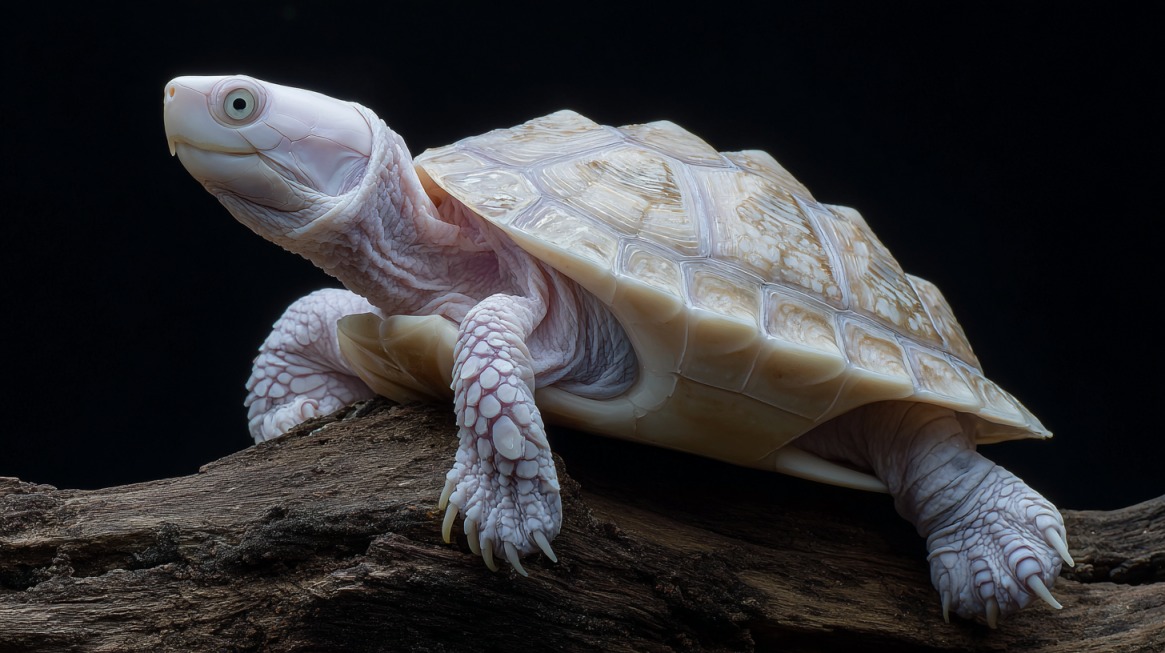
Albino turtles are among the ocean’s rarest inhabitants. Their ivory shells and pale pinkish skin make them instantly recognizable. One famous sighting took place on a Queensland beach, where a newborn albino sea turtle captured global attention.
Life for these turtles is extremely difficult. Their visibility exposes them to predators even before reaching the water.
In addition, many albino turtles suffer from weak vision and infertility, limiting population growth.
Conservationists often intervene during hatching seasons to increase their chances of survival.
- Appearance: Pale white shell and pinkish eyes.
- Occurrence Rate: Around 1 in hundreds of thousands.
- Known Sighting: Queensland, Australia.
- Common Issues: Vision impairment and infertility.
8. Albino Donkey (Asinara Donkeys)
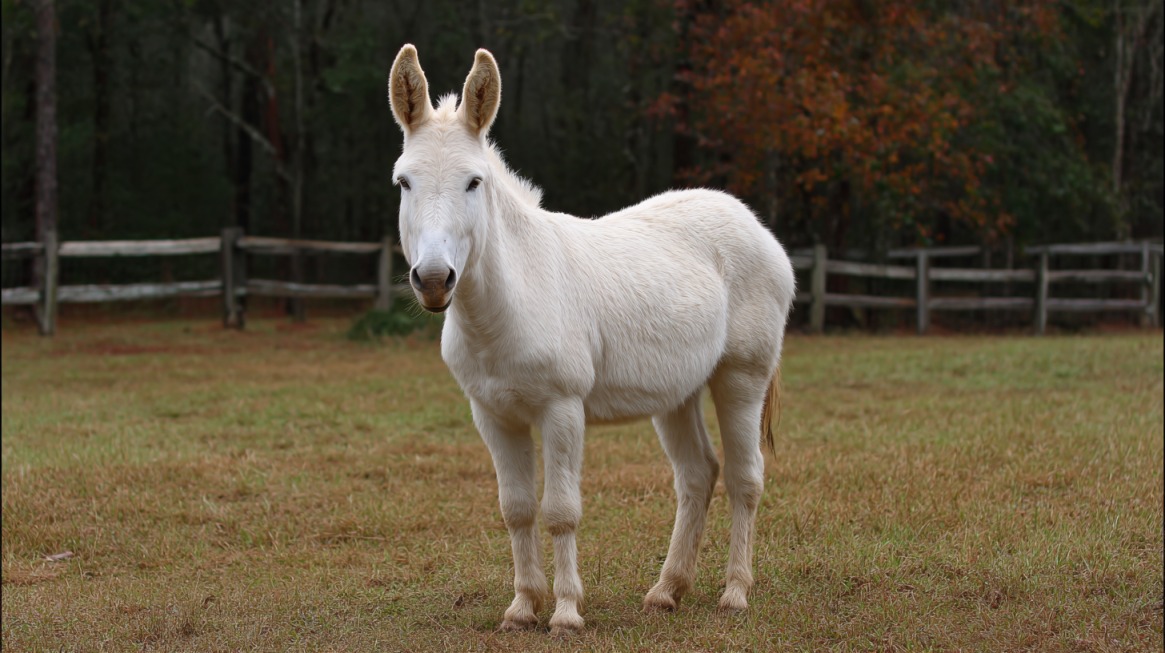
The Asinara albino donkeys of Italy form one of the most fascinating populations of albino animals on the planet.
Residing solely on Asinara Island, these donkeys exhibit oculocutaneous albinism type 1 (OCA1), affecting both their skin and eyes.
Once feral, the donkeys now enjoy full legal protection as a national treasure. Their snowy coats, soft demeanor, and pink eyes have made them symbols of Asinara’s identity.
Researchers frequently visit the island to study genetic inheritance patterns and conservation strategies.
- Location: Asinara Island, Italy.
- Albinism Type: OCA1.
- Conservation Status: Protected by Italian law.
- Population Trait: Entire herd exhibits albinism.
9. Albino Zebra (Golden Zebra)
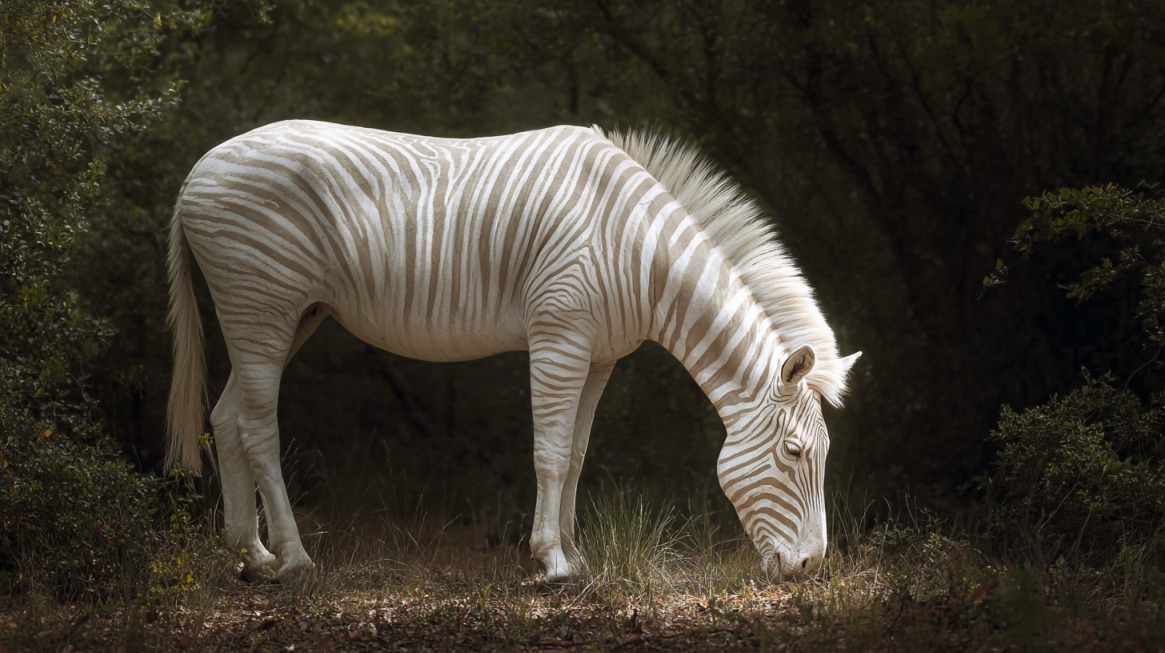
Golden zebras display stunning light yellow or gold stripes instead of traditional black and white.
Their variation results from partial albinism, allowing faint pigmentation to remain visible. A few dozen of these zebras are known to live in Kenya and private reserves in South Africa.
Unlike most albino animals, their golden hue gives them some camouflage benefits in dusty savannas.
Despite that advantage, their rarity makes them the subject of research and conservation attention.
- Coloration: Yellow-gold stripes.
- Estimated Count: Only a few dozen worldwide.
- Habitat Benefit: Improved blending with dry plains.
- Distribution: Kenya and South African reserves.
10. Albino Orangutan (Alba)
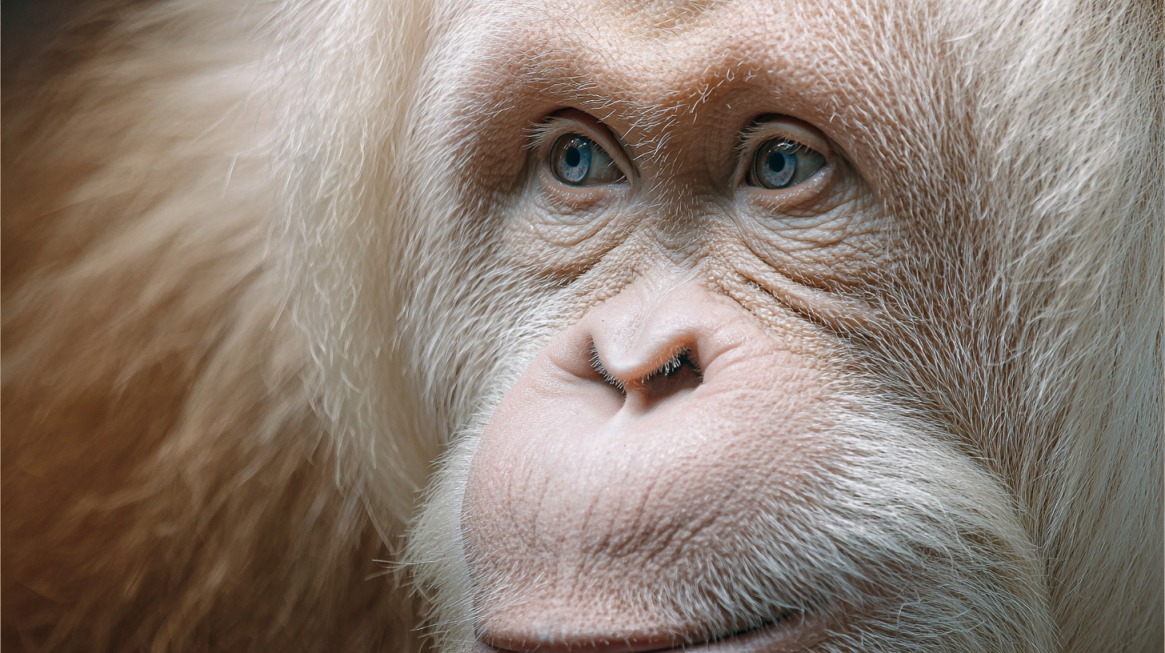
Alba, discovered in Borneo, represents one of the rarest albino animals known. Rescued from captivity in 2017, she became the first and only documented albino orangutan.
Her snow-white fur and striking blue eyes instantly set her apart, captivating conservationists around the world.
After her rescue, Alba was transferred to a protected island where she could live safely, free from human threats.
Caretakers closely monitor her diet, health, and behavior, ensuring she thrives in her environment.
Her story has become a rallying point for anti-trafficking efforts and wildlife protection in Southeast Asia.
- Rescue Year: 2017.
- Location: Borneo, Indonesia.
- Eye Color: Blue, contrasting with her white fur.
- Habitat: Private sanctuary for safety and research.
The Bottom Line
Albino animals remind humanity of nature’s extraordinary genetic variations and the fragility that accompanies them.
Their struggles and survival stories emphasize the need for compassion, conservation, and education about genetic conditions in wildlife.
Supporting sanctuaries and ethical observation programs helps protect these rare species.
Encouraging awareness and responsible tourism ensures future generations can appreciate their rare beauty without causing harm.
Check out this list of rare blind animals and learn more about how they live.
Related Posts:




